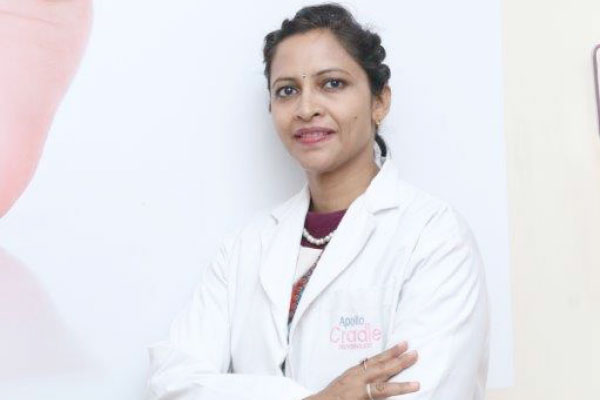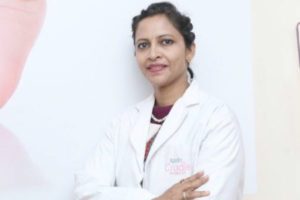
 Assisted Reproductive Technology (ART) has made immense strides since the first live birth following In-vitro Fertilisation (IVF) in 1978. This multi-faceted improvement led to the optimisation of ovarian stimulation and a better assessment of embryo quality, giving rise to steady increase in live birth delivery rates.
Assisted Reproductive Technology (ART) has made immense strides since the first live birth following In-vitro Fertilisation (IVF) in 1978. This multi-faceted improvement led to the optimisation of ovarian stimulation and a better assessment of embryo quality, giving rise to steady increase in live birth delivery rates.
The cumulative live birth rate after one oocyte retrieval cycle is considered the most accurate benchmark for ART success.

Empirical evidence shows that embryo evaluation based on morphology, morphokinetics, preimplantation genetic testing (PGT-A) or embryo metabolism, and microfluidics, all have the potential to rank embryos according to implantation potential.

We do not have high quality data showing the difference in ranking potential between these different methods to evaluate embryo quality. However, much of ongoing studies are based on these. The aim is to improve live birth rate or cumulative birth rate for most recent developments in ART.

IVF lab

A perfect homeostasis is provided by in vivo micro environment during the course of blastocyst development. The same is mimicked in IVF lab.
Various commercial media companies recommend differing pH ranges, most within the range of 7.2–7.4. Most don’t reveal the secret composition of media and fall short of robust research to indicate best media composition and incubation parameters.
Historically, CO2 set-points in incubators are adjusted to attempt to create the ideal media pH environment for any development stage of embryos. CO2 adjustments are usually done by calibrating the pH of equilibrated media once a month or once a week. There are many gadgets for pH measurement for IVF culture systems. A bench top pH meter can be used for the routine pH measurement with proper calibration buffers.
However, it is essential to keep the certificate of analysis of the media being used. A new technology, SAFE Sens Trak Station, enables real time non-invasive pH monitoring within an incubator environment.
Use of this technology can reveal about incubator conditions which are not ideal for maintaining ideal pH levels. Use of RFID tags precludes the errors in the lab.
Microfluidics: The future is for Microfluidics. From semen preparation to separate the motile healthy sperm, the technique is very useful and may provide sperm with high motility, normal morphology and with least DNA damage in comparison to simple wash and density gradient centrifugation (Schulte et al., 2007).
Lab-on-a-chip: Lately, labon-a-chip (LOC) has proven to be a useful tool for enhancing non-invasive assisted reproductive technology (ART).
Surrogates to Anti-Mullerian Hormone (AMH)
The oocyte-secreted growth factors, growth differentiation factor-9 (GDF9) and bone morphogenetic protein-15 (BMP15) are regulators of folliculogenesis, oocyte quality and fertility. It can be measured using immunoassays. They may have a role as predictors of fertility potential.
Latest drugs and protocols
DRUGS
1. Corifollitropin, a long acting Gonadotropin: One injection on day-two is enough for eight days. It might require two or three additional daily gonadotropin injection, with comparable results.
2. Recovelle: Follitropin delta has finished the phase III trial for individualised dosing based on AMH levels and body weight. The results are comparable to other gonadotropins.
3. Kisspeptin: Kisspeptin was first discovered in 1996 as a metastasis inhibitor. It is used as an ovulation trigger due to its efficacy in achieving pregnancy rates compared to human chorionic gonadotropin (HCG) and gonadotropin-releasing hormone agonist (GnRH agonist). Also, it is safe for patients who are at high risk of developing ovarian hyperstimulation syndrome (OHSS).
Latest Protocols
Stair Step Protocols: Stair Step protocols with both Clomiphene and letrozole are being used. The technique takes less time for ovulation keeping pregnancy rate low.
Shorter protocols
Time constrain associated with emergency fertility preservation has led to
• Dual stimulation
• Random-start at any point in the cycle, for cancer patients
Strategies for poor responders
Pre treatment with transdermal testosterone was associated with an increase in clinical pregnancy [rate difference (RD): +15%, 95% CI: +3% to +26%] and live birth rates (RD: +11%, 95% CI: +0.3% to +22%) among poor responders undergoing ovarian stimulation for IVF.
In conclusion, transdermal testosterone pre treatment seems to increase clinical pregnancy and live birth rates among poor responders undergoing ovarian stimulation for IVF.
There is ongoing research to improve thin endometrium but there is no effective easy solution yet.
Field-effect transistor (FET) with pinch of salt
There has been a see-saw approach over time i. e all fresh, then FET followed by fresh/ FET transfer. The available evidence from randomised controlled trials (RCTs) and systematic reviews and meta-analyses indicates that overall live birth rates (LBR) were significantly higher after FET as compared to fresh ET in the hyperresponders [HR], with significantly lower risk for OHSS in both groups. However, in HR, FET were associated with a higher risk for pre-eclampsia.
Therapeutic options
Anti-oxidant therapy
Cochrane Review by Showell et al (2013) gives no benefit for anti-oxidant therapy in improving clinical pregnancy or live birth. However, Coenzyme Q10, resveratrol and alpha-lipoic acid have been proving beneficial in terms of reducing aneuploidy rate, delaying oocyte reserve depletion, improving mitochondrial activity and reducing intracellular oxidative stress. There is a need to target the drug delivery and action.
Therapeutic options of treating mitochondrial dysfunction by three parent approach
Modern mitochondrial therapies – Mitochondrial replacement therapy is useful to two group of patients – one to patients with mitochondrial diseases to prevent the inheritance of the same in the progeny and patients with poor oocyte and embryo quality with previous failed IVF cycles at an attempt to improve oocyte/embryo competence and achieve pregnancy.
Meiotic spindle transfer, pronuclei transfer, cytoplasm transfer from donor oocyte and autologous germline mitochondrial energy transfer (AUGMENT) are the techniques in our armamentarium to boost oocyte/ embryo mitochondrial endowment.
The use of these techniques is still at experimental stage and shrouded with ethical and political challenges as well.
At the same time, Time LAPSE, DNA fragmentation test and PGT-A are gaining acceptance for indicated cases. But these are also adding to the cost of IVF cycles.
(Disclaimer: The writer is Dr Gunjan Saxena, IVF Specialist, Apollo Cradle. Views expressed are a personal opinion.)
Be a part of Elets Collaborative Initiatives. Join Us for Upcoming Events and explore business opportunities. Like us on Facebook , connect with us on LinkedIn and follow us on Twitter , Instagram.
"Exciting news! Elets technomedia is now on WhatsApp Channels Subscribe today by clicking the link and stay updated with the latest insights!" Click here!
















